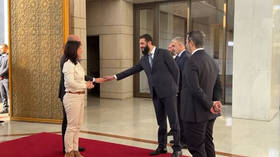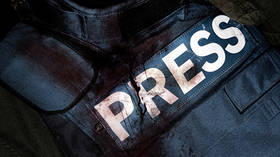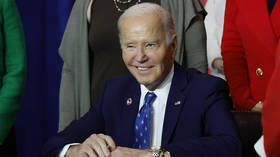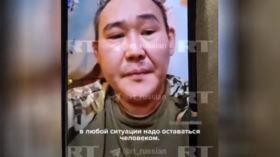START could be marred by Soviet nuclear “Dead Hand”
It has been more than a week since the START treaty between Moscow and Washington on cutting nuclear arsenals expired. While nuclear reduction may be the current trend, this was not always the case.
The Russian and the US presidents have been on the phone over the weekend, trying to forge a new arms deal. The next round of talks on the follow-up to the START treaty is to begin in Geneva this week.
However, there was a time when the United States and the Soviet Union were poised to do anything to gain the upper hand in a nuclear war – even if that hand was “dead”.
Imagine a completely automated means of global annihilation, much like “Skynet” from the Terminator movies, or even the absurd “Doomsday Device” boasted about by Doctor Strangelove. Is it a Soviet “X-File”? Or is it possible that any of this is real?
“There was a system developed in the USSR that was known as ‘Dead Hand’. What does that mean? Well, if the country was subjected to a nuclear missile strike and the Commander-in-Chief failed to make any decision, among the intercontinental missiles the USSR had there were those that could be launched by a signal given over the radio channel of the battle command system,” said doctor of Engineering Science Pyotr Belov.
Using a complex network of sensors measuring seismic activity, air pressure and radiation to detect if the Soviet Union had suffered a surprise nuclear attack, the “Dead Hand” system was there to make sure the nuclear arsenal could be launched without anyone pressing the red button. If the Kremlin was cut off, and the computers sensed an obliterating blast, the launch codes would be sent, giving the USSR the ability to strike back post-mortem.
“A system that could be automatically activated with the very first enemy strike is indeed required. Its availability makes the enemy understand that even if our command centers and the decision-making system are destroyed, there will be some automated means of launching the remaining missiles in a counterstrike,” said former joint Chief of Staff of Armed Forces General–Colonel Leonid Ivashov.
In the Cold War, America had its own backup, codenamed “Looking Glass”. Command crews were kept in the air continuously for three decades, with the idea they would constantly oversee strikes from the sky if ground control was lost in an attack. The main difference between “Dead Hand” and “Looking Glass” was that the Americans relied on humans to make the call. It was also retired when the Cold War ended – while it is not clear if the Soviet version still exists. Those who would know avoid the subject.
”I won't talk about it because I am not informed of its current condition,” Ivashov said.
All this comes at a time when everyone is talking about ditching nukes. Even so, now that the sun on the original arms reduction treaty is setting, a new one is only inching towards reality – possibly held back by America's recent plans for a missile defense shield, a move that would upset the balance, giving the US an unfair strategic advantage.
“I can only add that the task of further reduction of strategic offensive weapons is too important – both for Russia and the United States, and for the entire world – In fact, to prevent it from being held hostage, to any particular regime, anywhere around the globe,” Russian Foreign Minister Sergey Lavrov said.
If the treaty is signed and nuclear disarmament continues, maybe the world will see the day when such destructive technology is put aside, and other nuclear–capable nations will follow suit.













